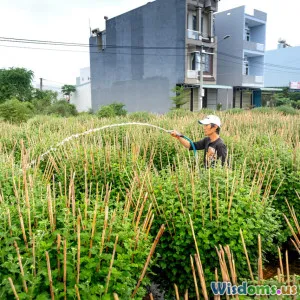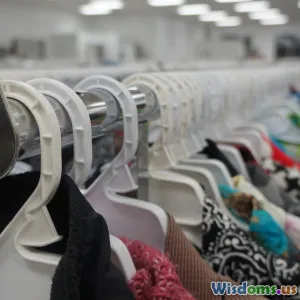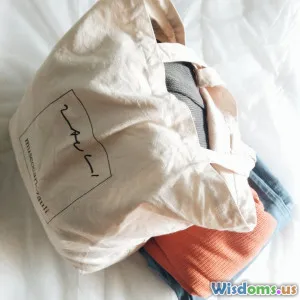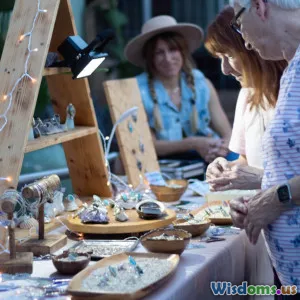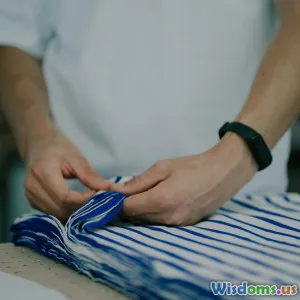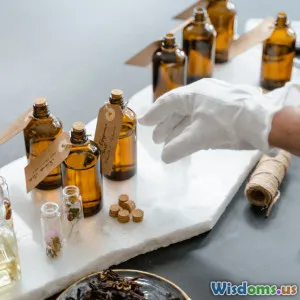
Why Handmade Soap Makers Face Sourcing Challenges in 2024
7 min read Discover why handmade soap makers face sourcing challenges in 2024 and how it affects their craft and business growth. (0 Reviews)
Why Handmade Soap Makers Face Sourcing Challenges in 2024
Handmade soap, once a niche for hobbyists and small artisans, has blossomed into a vibrant market driven by consumers seeking natural, artisanal products over commercial alternatives. Yet, in 2024, many handmade soap makers are grappling with increasingly complex sourcing challenges. These hurdles threaten both the quality and availability of ingredients that are integral to their craft. Understanding these challenges is crucial not only for soap makers but also for consumers who value the value and ethical commitment embedded in handmade soaps.
The Delicate Craft of Handmade Soap
Handmade soap makers rely on a blend of natural ingredients such as essential oils, plant-based oils, butters, and natural additives like herbs or clays. Unlike mass-produced soaps that prioritize synthetic additives for uniformity and cost-efficiency, handmade soaps demand raw materials of high purity and traceability.
Supply Chain Disruptions in 2024
According to the World Bank's recent reports, global supply chain instability continues to pressure small producers [1]. Handmade soap makers, often ordering in small batches unlike larger companies, face difficulty securing consistent and timely deliveries of key ingredients such as coconut oil, shea butter, and essential oils like lavender and tea tree.
Impact of Global Weather Phenomena
Climate change has altered production patterns for major natural raw materials. For example, El Niño events have disrupted coconut harvests in the Philippines, a critical supplier of coconut oil. Shea butter production in West Africa has also been affected due to irregular rainfall diminishing nut yields.
Increased Freight Costs
Transportation expenses have surged by over 15% in the past year alone due to fluctuating fuel prices and ongoing port congestion [2]. Handmade soap makers, many operating on tight margins, find it challenging to absorb these spikes or pass on all additional costs to customers.
Rising Costs of Ethical and Organic Ingredients
Consumer demand for ethically sourced and organic ingredients pushes makers toward premium suppliers. Organic certification, fair-trade premiums, and sustainable harvesting techniques add not only to the price but complicate sourcing logistics.
For instance, organic lavender essential oil from France can cost up to 40% more than non-organic versions sourced from other regions. A small soap maker interviewed by Crafted Daily noted, "Choosing ethical suppliers is a moral choice but often a financial gamble when prices double unexpectedly."
Regulatory and Import Restrictions
2024 has brought regulatory tightening, especially around essential oils and botanical extracts. Countries like the EU have implemented stricter phytosanitary standards, complicating imports from certain regions.
Handmade soap businesses must now navigate additional paperwork, certifications, and delayed customs clearance, leading to inventory shortages. An American soap maker shared their experience: "The extended lead times in import approvals forced us to delay product launches and reshape our ingredient lists urgently."
Sustainability Pressures and Resource Scarcity
Sustainability concerns today directly impact ingredient sourcing. Shea trees, coconut palms, and certain aromatic plants used for essential oils have grown scarcer due to overharvesting and habitat loss.
Local cooperatives engaged in sustainable harvesting work with limited output, which restricts availability. Additionally, the drive to leave a smaller environmental footprint incentivizes sourcing closer to home, even though local organic oils might be costlier or less abundant.
Innovation and Adaptation in Sourcing
Despite challenges, some handmade soap makers innovate by:
- Developing local supply chains: Collaborating with farmers and cooperatives locally to organically grow needed plants.
- Utilizing alternative ingredients: Experimenting with oils like hemp seed or sunflower, more resilient in production.
- Bulk purchasing cooperatives: Joining networks to buy premium ingredients collectively, reducing costs.
- Transparent storytelling: Sharing sourcing stories with customers to justify price points and support.
The Handmade Soap Guild has reported that 62% of its members have adjusted ingredient suppliers or formulations in the past year to offset sourcing difficulties.
The Consumer’s Role and Market Trends
Consumers increasingly question not just what is in a product but how it was sourced. The willingness to pay a premium for ethically and sustainably made soaps mitigates some sourcing pressures. However, economic challenges and inflation have made buyers more price-sensitive, giving soap makers a delicate balancing act.
Conclusion: Navigating the Complex Landscape of 2024
Handmade soap makers in 2024 face a convergence of challenges stemming from global supply chain disruptions, environmental pressures, rising costs, and regulatory complexities. While these factors complicate sourcing and increase production costs, they also push artisans to innovate, promote transparency, and build stronger connections with their ingredient suppliers and customers.
For those who engage in or appreciate handmade soap, understanding these challenges deepens the appreciation of the product’s value beyond its fragrance and texture. It highlights the resilience of the craft and the careful stewardship artisans must perform in an evolving global marketplace.
References
- World Bank Global Supply Chain Report 2024
- International Transport Forum – Freight Costs Analysis Q1 2024
About the Author: An industry analyst with a passion for artisanal wellness products, the author explores trends impacting independent makers worldwide.
Rate the Post
User Reviews
Popular Posts










